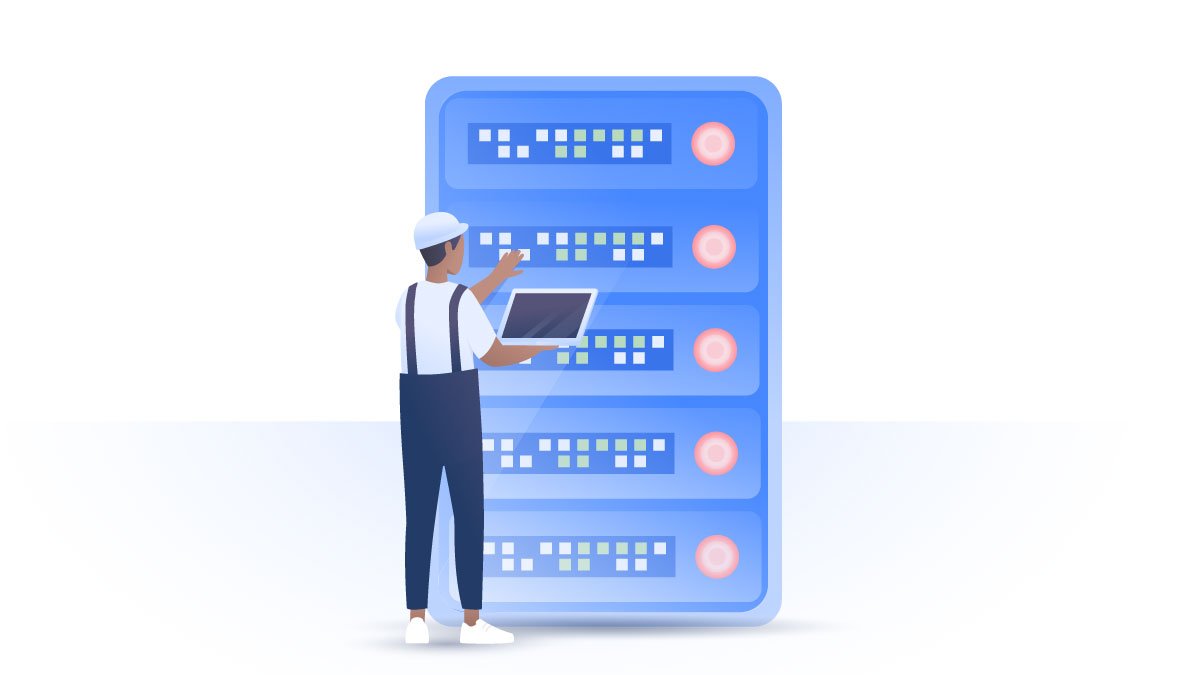How to install a VPN on your router
Installing a VPN app on your smartphone, laptop, or tablet is a great way to enhance your security and privacy. However, if you want to protect your whole network and especially devices that don’t support VPN functionality, you can install a VPN on your router. In this article, we’ll discuss the pros and cons of a VPN router and explain how to set it up at home.
Daniel Markuson
Sep 22, 2021 · 1 min read

Contents
What is a VPN router?
A VPN router works exactly like a normal VPN. Your traffic is redirected through a VPN’s servers, allowing you to browse online completely undisturbed. All your activity will be hidden from anyone trying to spy on you, whether it’s petty thieves to data-hoarding corporations.
The reason you’d want a VPN on your router is to provide network-wide online security. Once a router has been configured to download VPN firmware, all connected devices will be granted the benefits of VPN protection. That includes devices that may normally not have the ability to utilize VPN software to its fullest, like a lot of smart home devices. Here’s a video explaining exactly how a router VPN works.
How does a VPN router work?
A VPN creates an encrypted and secure connection between the device it’s installed on and the internet. It gathers all of that device’s requests to access the internet and directs them through its encrypted tunnel and VPN server so they can’t be read or redirected.
That’s easy to understand when you’re on a device with a user interface. Want to visit a website? You go through the tunnel. Want to video call your BFF? Through the tunnel. But what happens on a device with no user interface, like a router?
Once you’ve set up a router VPN, every single device connected to your router will have its traffic sent through the encrypted tunnel. Your PC, your laptop, your home entertainment system, and even your smart IoT toaster.

VPN on your router: pros and cons
| Pros | Cons |
|---|---|
| Protecting your whole network | Managing your VPN settings is harder |
| Securing devices that don’t support VPN | Encryption and available protocols depend on your router |
| Connecting multiple devices | Traffic between a device and router is not encrypted |
Pros
Always-on security and privacy
With a router VPN, you’ll always be connected to the VPN server. You’ll never forget to secure yourself because you’ll be part of the VPN protection as long as your router is working. If any of your devices initiate any automatic connections, like account balance updates for a personal finance app, they will be secured even if you’re sleeping.
Comprehensive home security
That always-on VPN server connection will apply to every device connected to your home router VPN. It will cover new devices you get with no additional setup, and it will even cover your guests when they visit and ask for your WiFi password.
Covers devices that don’t support VPNs
There are plenty of WiFi-connected devices that don’t support VPN coverage on their own but could certainly benefit from it. Security is always essential, no matter what device you're using.
Connect more devices
NordVPN allows you to connect up to 6 devices, which is already more than enough for most users. But did you know that your NordVPN-enabled router counts as only one device? If your laptop, smartphone, and desktop PC all connect over your VPN-enabled router, that’s still technically only one device connected. It’s not a good idea to abuse this feature because your connection speed and stability may suffer, but it’s an easy way to expand the number of devices your NordVPN subscription covers.
Cons
Managing your VPN settings is harder
Because your router doesn’t have its own user interface (beyond a few simple buttons), you’ll have to access it through another device in order to adjust your VPN settings. Turning your VPN tunnel on and off or changing the country it’s connected to is much more convenient using NordVPN’s app. It’s still possible on your router, but not as convenient.
Configuration and encryption power depends on your router
Most routers lack the power to run anything more than the most basic encryption or tunneling protocols. You may want to upgrade to a VPN router that supports more secure protocols or simply research what your chosen protocol does and doesn’t protect you from.
Blocks some incoming connections
By its very nature, a VPN is designed to block incoming unauthorized connections. You’ll have an easier time initiating connections using your laptop, computer or smartphone to get around this limitation because they have user interfaces. Your less-accessible devices, like your router, will probably remain unreachable from outside since they can’t initiate connections. This doesn’t apply to automated processes on user devices, however – your computer will still receive emails and notifications.
Traffic between devices and the router is not secured
Because encryption occurs on the router, traffic between the device and the router will not yet be encrypted. If you have a secure home WiFi setup and your mobile devices aren’t set to auto-connect to other networks, this shouldn’t be a huge issue. This only becomes a serious security issue if random strangers are capable of connecting to your network.
Different types of VPN routers
- Routers that support a VPN client.
- Routers that need upgrading their firmware in order to install a VPN client.
- Routers that already come with a certain VPN service pre-installed.
- VPN router boxes designed to connect to your router.
As you can see, there are different types of VPN routers, and they all have pros and cons. Having a VPN service pre-installed is the easiest way to secure your network, as you don’t need to do any additional configuration. But if you need to upgrade your firmware to use a VPN, it takes more time and requires some technical skills.
If your router supports a VPN client, it doesn't take more than a couple of minutes to set up a VPN.
How do I know if my router is VPN compatible?
Before you go further, it's important to make sure that you have as supported router that's compatible with a VPN. Not all routers are.
To find out more about compatibility, check the manual that may have come with your router. If you didn't receive any manual, or if you've misplaced it, you should be able to find the information you need online. Just search for the name of your router and “VPN compatibility”. If you're buying a new router, it's also a good idea to make sure it's VPN compatible before you purchase it. There are plenty of excellent home VPN routers on the market.
It is worth noting that most ISP routers and modems don’t support a VPN connection. However, you can combine an ISP modem with a VPN-supported router for a VPN to work.
If you’re looking for a VPN-supported router, here are a few suggestions that will benefit both home users and SMEs:
- Linksys WRT 3200 ACM
- Asus RT-AC86U
- Teltonika RUTX11
- Netgear Nighthawk X10 AD7200
How to set up a VPN on your router

The first thing you need to do is select a VPN that supports router connections, and if you want the best VPN on the market, then NordVPN is a safe choice.
Next, you’ll have to see if your router supports VPN functionality. To find out if your router can run NordVPN, check out our tutorial page and find your router’s brand and model. Some routers there will also include NordVPN router setup instructions. It's possible to find a pre-configured VPN router if you look hard enough.
The specifics for NordVPN router installation will vary between brands and models, but the general steps will be as follows:
1. Log into your router
If you want to learn how to use a VPN, start by logging into your router and adjusting its settings. You’ll have to gain access using your product manual or service provider so you can make the changes you need to install a VPN on your router.
For most routers, you’ll have to start by entering its IP address into your search bar and logging in (here’s how to find your router IP address if you don’t know it). If you’ve never logged into your router, this would be a great opportunity to change your password as well (here’s how to make a secure password) because many are shipped with factory default passwords that are super easy to hack!
2. Configure your router
The steps you take to configure your router will depend entirely on your router’s firmware. Some routers, like many of those offered by Asus, have integrated VPN functionality. For others, you’ll have to reconfigure their settings to redirect their traffic to a VPN server. Again, the best place to find specific instructions for your specific router will be our exhaustive tutorial page or your manufacturer’s manual or website.
3. Test it!
Once you’ve completed the configuration process for your router VPN, test it to see if the connection works. You’ll be able to log into your router at any time (from home) to adjust your settings, but it’s still going to be less convenient than using one of NordVPN’s apps. Remember, you don't need a particularly special router, most will be able to incorporate VPN protection.
Still don't know how to install a VPN on your router?
If you’re experiencing issues and don’t know how to install a VPN, no problem. NordVPN has award-winning 24/7 live customer support in multiple languages. If these tips didn't help you and you're still lost, our support experts will help you find a way to put NordVPN on your router. Contact them at support@nordvpn.com or through the live chat or other means available here.
Tips for using your VPN router
Avoid unnecessary double coverage
With NordVPN working on your router and out of sight, you may forget it’s switched on. If you use NordVPN on another device while at home, your NordVPN encrypted tunnel will still be sent through the encrypted tunnel set up on your router. This can be a powerful and useful feature when using our Double VPN setting, but NordVPN was not designed to function this way through your VPN router. To avoid significant speed reductions or instability, use one method or another to connect to NordVPN’s servers.
Bookmark your router settings page
Connecting to your router to change the settings might be inconvenient, but you can bookmark the address to make this part just a bit easier.
To avoid double coverage, set up a separate router
Most devices that you carry with you throughout the day (phones, laptops, and tablets) will be able to support a VPN app. This will keep you safe while outside the house, but if you forget to switch the app off in your home, the two overlapping VPN connections can cause a drop in internet speed.
If you have two routers, you can connect your phone or tablet to the one that isn’t configured with a VPN. Meanwhile, any devices that don’t support a VPN app (some smart TVs and gaming consoles, for example) can run on your VPN router. All your hardware will be protected, without risking any reduction in speed.
Check out these NordVPN reviews to find out more about the NordVPN experience. Whether on your router or your other devices, NordVPN will keep you secure and private online. Get started today and use a NordVPN coupon to find the best deal possible.


